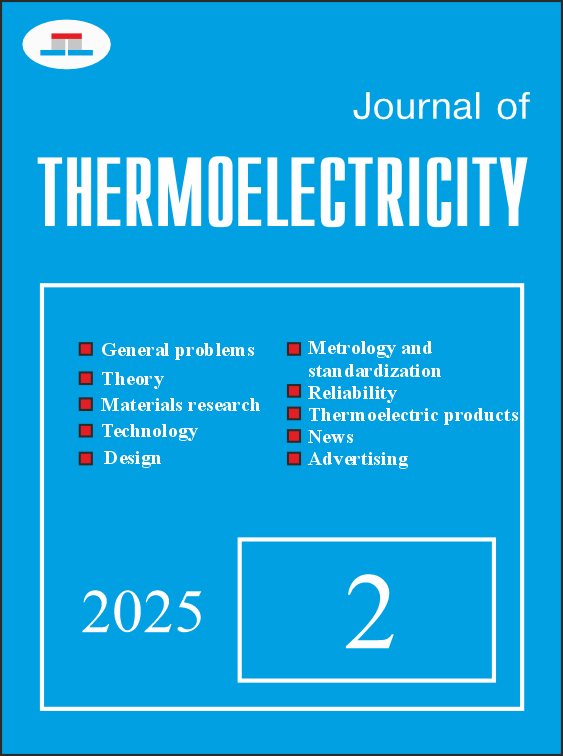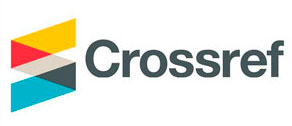Computer Simulation of Cyclic Temperature Effect on Biological Tissue During the Destruction of Oncologic Tumors
DOI:
https://doi.org/10.63527/1607-8829-2025-2-85-96Keywords:
thermoelectric device, cryodestruction, hyperthermia, cyclic temperature effect, computer simulation, biological tissue, tumor, cooling, heatingAbstract
The results of computer simulation of the temperature effect on biological tissue with oncologic neoplasms in cooling, heating modes, as well as their cyclic change are presented. A physical, mathematical, and computer model of biological tissue with oncologic neoplasms is constructed, with regard to thermophysical processes, blood circulation, heat exchange, metabolic processes, and phase transition. The change in temperature distributions over time in biological tissue with an oncologic neoplasm and a working tool depending on the geometry of the working tool and its temperature is studied. Computer optimization of the working tool is carried out and the design of a thermoelectric device for the destruction of oncologic neoplasms is developed.
References
1. Wu, Z., Xia, F., & Lin, R. (2024). Global burden of cancer and associated risk factors in 204 countries and territories, 1980–2021: A systematic analysis for the GBD 2021. Journal of Hematology & Oncology, 17, 119. https://doi.org/10.1186/s13045-024-01640-8
2. Bray, F., et al. (2018). Global cancer statistics 2018: GLOBOCAN estimates of incidence and mortality worldwide for 36 cancers in 185 countries. CA: A Cancer Journal for Clinicians, 394–424.
3. Kobylianskyi, R., Ivashchuk, O., Bodiaka, V., & Fedoriv, R. (2025). Computer optimization of the working tool for a thermoelectric cryodestruction device. Journal of Thermoelectricity, 1, 81–100. https://doi.org/10.63527/1607-8829-2025-1-81-100
4. Kobylianskyi, R., Vikhor, L., Fedoriv, R., & Izvak, Y. (2024). Design of a multi-stage thermoelectric cooler for a human heart ablation device. Journal of Thermoelectricity, 4, 5–13. https://doi.org/10.63527/1607-8829-2024-4-5-13
5. Kobylianskyi, R., Kobylianska, A., & Fedoriv, R. (2024). Computer simulation of temperature distributions in the human heart during cryoablation. Journal of Thermoelectricity, 3, 25–35. https://doi.org/10.63527/1607-8829-2024-3-25-35
6. Anatychuk, L., Kobylianskyi, R., Fedoriv, R., & Konstantynovych, I. (2023). On the prospects of using thermoelectric cooling for the treatment of cardiac arrhythmia. Journal of Thermoelectricity, 2, 5–17. https://doi.org/10.63527/1607-8829-2023-2-5-17
7. Shrestha, S., et al. (2020). Cryosurgery for cancer: Current status and future perspectives. Journal of Cancer Research and Therapeutics, 1–10.
8. Gage, A. A. (1992). Cryosurgery in the treatment of cancer. Surgery, Gynecology & Obstetrics, 174(1), 73–92.
9. Gage, A. A., & Baust, J. G. (2004). Cryosurgery for tumors - a clinical overview. Technology in Cancer Research & Treatment, 3(2), 187–199. https://doi.org/10.1177/153303460400300212
10. Kwak, K., Yu, B., Lewandowski, R. J., & Kim, D. H. (2022). Recent progress in cryoablation cancer therapy and nanoparticles mediated cryoablation. Theranostics, 12(5), 2175–2204. https://doi.org/10.7150/thno.67530
11. Chang, D., Mohan, P., Amin, A., Garcia-Buitrago, M., Rodriguez, J., & Peaden, R. (2020). Liquid nitrogen-based cryoablation in in vivo porcine tissue: A pilot study. Asian Pacific Journal of Cancer Prevention, 21(10), 3069–3075. https://doi.org/10.31557/APJCP.2020.21.10.3069
12. Moulin, B., et al. (2023). Single-probe percutaneous cryoablation with liquid nitrogen for the treatment of T1a renal tumors. Cancers, 15(21), 5192. https://doi.org/10.3390/cancers15215192
13. Anatychuk, L. I. (2003). Thermoelectricity. Vol. 2. Thermoelectric power converters. Kyiv, Chernivtsi: Institute of Thermoelectricity.
14. Anatychuk, L. I. (1998). Thermoelectricity. Vol. 1. Physics of Thermoelectricity. Kyiv, Chernivtsi: Institute of Thermoelectricity.
15. Riffat, S. B., & Ma, X. (2003). Thermoelectrics: A review of present and potential applications. Applied Thermal Engineering, 23(8), 913–935. https://doi.org/10.1016/S1359-4311(03)00012-7
16. Anatychuk, L. I., Vikhor, L. M., Kobylianskyi, R. R., Kadeniuk, T. Ya., & Zvarych, O. V. (2017). Computer simulation and optimization of the dynamic operating modes of thermoelectric reflexotherapy device. Journal of Thermoelectricity, 3, 65–74.
17. Anatychuk, L. I., Kobylianskyi, R. R., Konstantinovich, I. A., Lys'ko, V. V., Puhantseva, O. V., Rozver, Y. Y., & Tiumentsev, V. A. (2016). Calibration bench for thermoelectric converters of heat flux. Journal of Thermoelectricity, 5, 65–72.
18. Yiu, W. K., Basco, M. T., Aruny, J. E., Cheng, S. W., & Sumpio, B. E. (2007). Cryosurgery: A review. The International Journal of Angiology, 16(1), 1–6. https://doi.org/10.1055/s-0031-1278235
19. Crezee, J., Franken, N. A. P., & Oei, A. L. (2021). Hyperthermia-based anti-cancer treatments. Cancers, 13(6), 1240. https://doi.org/10.3390/cancers13061240
20. Kok, H. P., Cressman, E. N. K., Ceelen, W., Brace, C. L., Ivkov, R., Grüll, H., ter Haar, G., & Crezee, J. (2020). Heating technology for malignant tumors: A review. International Journal of Hyperthermia, 37(1), 711–741. https://doi.org/10.1080/02656736.2020.1779357
21. Oei, A. L., Kok, H. P., Oei, S. B., Horsman, M. R., Stalpers, L. J. A., Franken, N. A. P., & Crezee, J. (2020). Molecular and biological rationale of hyperthermia as radio- and chemosensitizer. Advanced Drug Delivery Reviews, 163–164, 84–97. https://doi.org/10.1016/j.addr.2020.01.003
22. COMSOL Multiphysics, v. 6.0. (2021). COMSOL AB, Stockholm, Sweden. www.comsol.com
23. Pennes, H. H. (1998). Analysis of tissue and arterial blood temperatures in the resting human forearm. Journal of Applied Physiology, 85(1), 5–34. https://doi.org/10.1152/jappl.1998.85.1.5
24. Incropera, F. P., & DeWitt, D. P. (2007). Fundamentals of heat and mass transfer. Wiley, 1–997.
25. Xu, F., Lu, T. J., & Seffen, K. A. (2008). Biothermomechanics of skin tissues. Journal of the Mechanics and Physics of Solids, 56(5), 1852–1884. https://doi.org/10.1016/j.jmps.2007.11.011
26. Deng, Z.-S., & Liu, J. (2005). Numerical simulation of selective freezing of target biological tissues following injection of solutions with specific thermal properties. Cryobiology, 50(2), 183–192. https://doi.org/10.1016/j.cryobiol.2004.12.007
27. Jiang, S. C., Ma, N., Li, H. J., & Zhang, X. X. (2002). Effects of thermal properties and geometrical dimensions on skin burn injuries. Burns, 28(8), 713–717. https://doi.org/10.1016/S0305-4179(02)00104-3
28. Cetingul, M. P., & Herman, C. (2008). Identification of skin lesions from the transient thermal response using infrared imaging technique. IEEE, 1219–1222.
29. Ciesielski, M., Mochnacki, B., & Szopa, R. (2011). Numerical modeling of biological tissue heating: Admissible thermal dose. Scientific Research of the Institute of Mathematics and Computer Science, 1(10), 11–20.
30. Filipoiu, F., Bogdan, A. I., & Carstea, I. M. (2010). Computer-aided analysis of the heat transfers in skin tissue. Proceedings of the 3rd WSEAS International Conference on Finite Differences - Finite Elements - Finite Volumes - Boundary Elements, 53–59.




